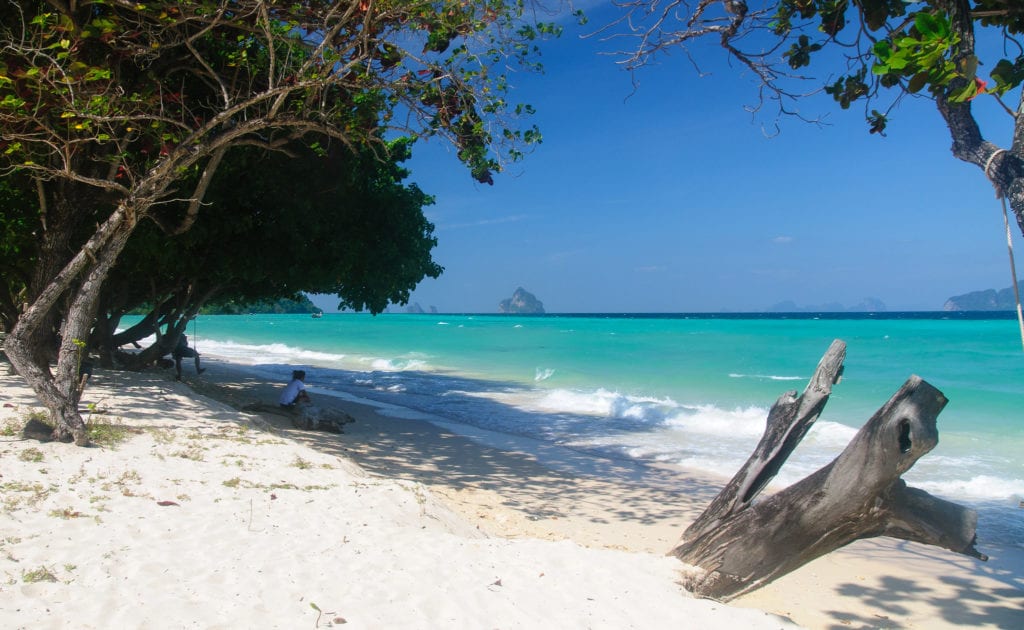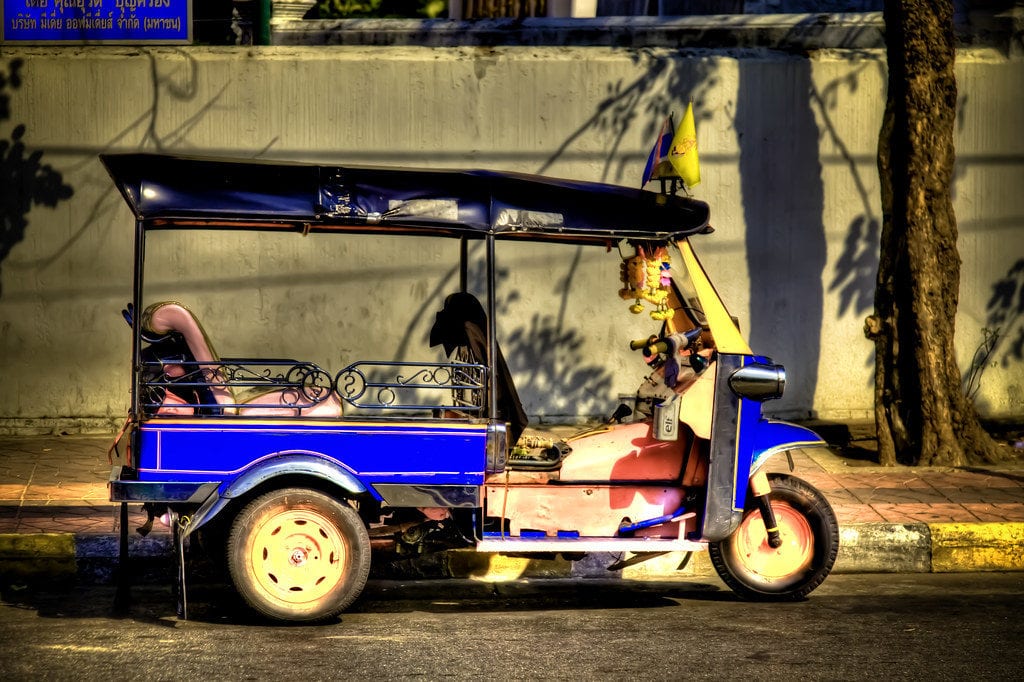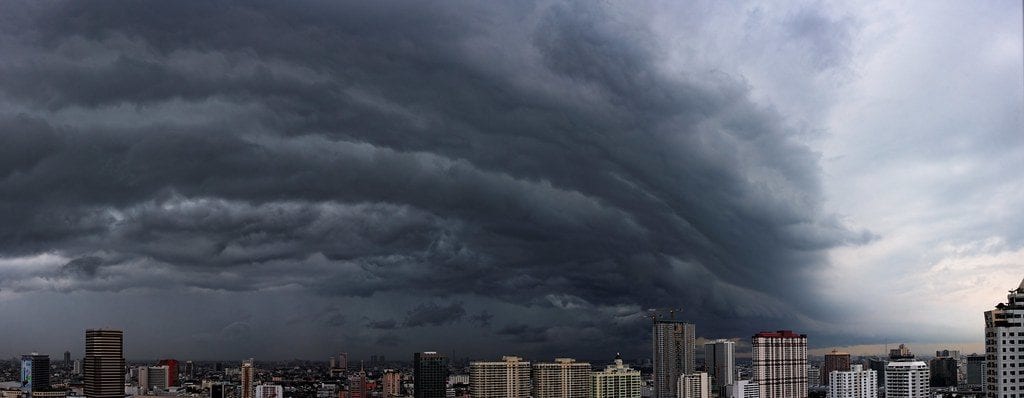Tuk Tuk Tours
Explore Bangkok by the iconic tuk tuk
Bangkok and the rest of Thailand are renowned for their sweltering heat – local residents often refer to Thailand’s seasons as being ‘hot, hot, and hotter’, and a popular meme that regular does the rounds on social media depicts Bangkok as being detached from the rest of the earth and situated part-way between Mercury and the sun. Of course, there is variation between the weather in Bangkok and elsewhere around Thailand at different times of year, even if it might not be as pronounced as the seasons you are used to back home. The weather can be an important consideration when choosing when to book your getaway to Bangkok, and with our guide to the seasons in Thailand you’ll be able to make plans for your first or latest visit with confidence.

This is arguably the best time of year to be in Thailand – but, of course, that means it can also be the most expensive time. During Thailand’s cool season from November through to February, the weather is still pleasantly hot, but the humidity of the other times of year eases off, there is little to no rain to worry about, and most days see non-stop beautiful blue skies.
This is the time of year when the country and its visitors head to the beach, and with good reason, but that means you need to expect prices for everything from hotel accommodation to domestic (and even international) flights to increase across the country.
Expect average daily high temperatures of around 32°C (90°F) to 33°C (91°F), dropping to around a pleasant 22°C (72°F) to 24°C (75°F) at night, and with not much more of a day or two of (partial) rainfall per month, especially from December onwards.

Things get steamy between March and May in Bangkok and elsewhere around Thailand – it’s not for nothing that local residents are especially pleased to cool off with a nationwide public water fight when the Thai new year holiday of Songkran arrives in mid-April!
This is the time of the year when Thailand’s heat can become most uncomfortable of all for those not used to it, as the mercury soars and the humidity increases with it. April is easily the hottest month of all. Rainfall is still few and far between, although it begins to increase towards the end of this season as we approach the arrival of the monsoon season from June onwards – by which time you’ll be grateful for it.
If you’re in Bangkok, you’ll likely be ducking into 7/11 convenience stores and shopping centres at every opportunity to refresh yourself with a blast of air-con. If you’re on the beach then the cool air coming off the sea will likely go some way to reduce the extremities of the temperature but, both here and in the cities, having access to a swimming pool at your hotel can also be a real saviour.
Expect average daily high temperatures of around 34°C (93°F) to 35°C (95°F) – in recent years this has even got as high as 38° (100°F) in Bangkok, and higher still upcountry in some of Thailand’s hottest provinces like Kanchanaburi and those in the northeastern Isaan region. Temperatures only drop to around 26°C (79°F) to 27°C (81°F) at night, but rainfall is at least limited to just a few days per month (more in May).

If you come to Thailand during the monsoon season between June and October, you should expect some rain – not that that should put you off at all.
It goes without saying that the rain here is different from what you might be used to at home – the rain here is warm, not cold – and, in any case, it is unlikely that you’ll often have a full day of rain to wash out your plans completely. The more likely scenario is a short but heavy downpour in the morning or afternoon, lasting perhaps an hour or two at most, and then good, dry weather for much of the rest of the day.
While grey, overcast days are a more common sight during the wet season from June to October than they are for the rest of the year, plenty of clear blue skies still make it through. Plenty of visitors to Thailand enjoy the rainy season, since it not only brings the country’s verdant greenery to life but it also shows you a different side to the country – great for open-minded photographers looking to capture something other than the typical clear-skied beach scenes that everyone else gets. Our tuk tuk and walking tours also go ahead come rain or shine – we come equipped with colourful raincoats for everyone and, if anything, we think a little rain adds to the fun!
One other definite advantage to the wet season is that prices on accommodation, transport and more can fall quite substantially in an effort to lure in visitors during what is typically a quieter period for Thailand’s tourist industry (a blessing in itself, since it means you won’t have to deal with quite the same hordes of people as you might in the peak of high season).
Having said that, it’s worth keeping in mind that short-term localised flooding is not uncommon at this time of year, both in Bangkok and elsewhere around the country as local infrastructure struggles to cope with the sudden deluge of water forced down from the sky. In Bangkok in particular, a sudden downpour can also wreak havoc on the city’s already temper-testing traffic situation, so if you’re visiting at this time of year you will want to build plenty of flexibility into the time you allow yourself to get around by taxi or public transport. And pack an umbrella or raincoat!
Expect average daily high temperatures of around 33°C (91°F) to 34°C (93°F), dropping to around 25°C (77°F) to 26°C (79°F) at night. You might experience as many as 14 to 18 days of rainfall per month but, again, these are likely to be partial rather than full rainy days in most cases.
Away from Bangkok, the weather can vary quite dramatically from these standard Thai seasons. Northern Thailand sees less benefit from the cooler temperatures of November to February, although things do still ease off slightly from the intense heat of the rest of the year – on the other hand, the north gets a full-on assault of rain come the wet season.
Things are rather more complicated down in the south, where weather systems can differ even between the southeastern and southwestern coasts. The variation in temperature doesn’t really happen down here to the same extent that it does elsewhere in the country, with the focus more on the level of rainfall – generally on the southwestern coast (including Krabi and Phuket) you can expect things to be wetter between April and October, while on the southeastern coast (including the islands of Koh Samui, Koh Tao and Koh Pha Ngan) the rain comes between September and December, somewhat in contrast with the rest of the country and to the surprise of some visitors (although this does make Koh Samui a good escape from June to August’s summertime rain elsewhere).
Photos by Alessandro Caproni; Jacob Montrasio; Dennis Wong